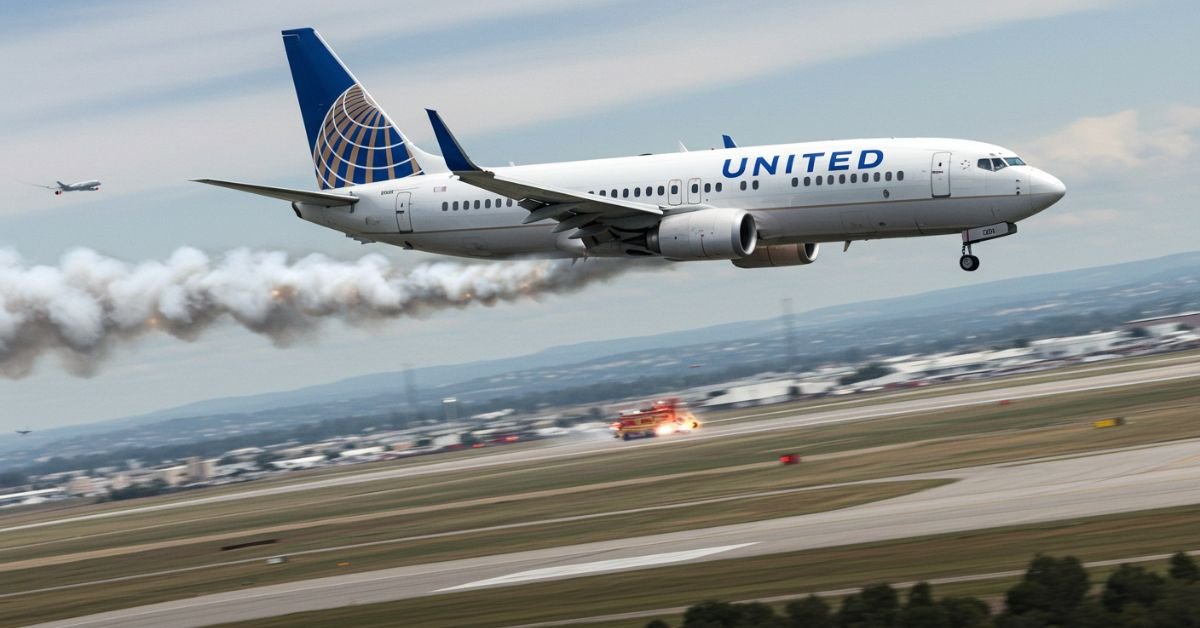Air travel today is considered one of the safest forms of transportation, but emergencies can still happen. On a routine journey from Barcelona to Chicago, United Airlines Flight UA770 was forced to declare an emergency and divert to London Heathrow. While all passengers landed safely, the incident raised important questions about how airlines respond to emergencies, what passengers go through, and how diversions affect global aviation operations.
This article provides a complete, human-friendly breakdown of what happened, why emergency diversions occur, and what lessons can be drawn from United Airlines Flight UA770.
Contents
- 0.1 What Happened on Flight UA770?
- 0.2 Understanding “Squawk 7700”
- 0.3 Why Pilots Choose Diversion Airports
- 0.4 The Passenger Experience During Diversion
- 0.5 How Airlines Handle Emergency Diversions
- 0.6 Why Incidents Like UA770 Matter
- 0.7 The Bigger Picture: Diversions in Modern Aviation
- 0.8 Lessons Learned from Flight UA770
- 1 Frequently Asked Questions (FAQs)
What Happened on Flight UA770?
United Airlines Flight UA770 was a scheduled service operated by a Boeing 787-9 Dreamliner. The flight departed Barcelona, Spain, with its destination set for Chicago O’Hare International Airport in the United States.
The crew adjusted their transponder code to 7700, the international signal for a general in-flight emergency, halfway during the flight to declare an emergency. Shortly after, the pilots diverted the flight to London Heathrow Airport in the United Kingdom, where it landed safely.
Although the exact cause of the diversion has not been officially confirmed to the public, emergency diversions like this often involve one of the following:
- A medical emergency on board.
- A technical issue with the aircraft.
- A precautionary measure due to abnormal system warnings.
Regardless of the reason, the quick decision-making of the flight crew ensured that all passengers and crew members reached safety without further complications.
Understanding “Squawk 7700”
A key moment in this incident was the use of the transponder code 7700.
What is a transponder code?
Every commercial aircraft is equipped with a transponder, which communicates the plane’s identity and status to air traffic control (ATC). Pilots can select different four-digit codes depending on the situation.
The meaning of 7700
When pilots select 7700, it immediately alerts all nearby air traffic controllers that the aircraft is in distress. This allows ATC to clear airspace, prioritize communications, and coordinate emergency services at the nearest suitable airport.
In the case of UA770, this code helped ensure that the diversion to London Heathrow was handled quickly and efficiently.
Why Pilots Choose Diversion Airports
When an emergency occurs, the pilots must decide where to land as soon as possible. The chosen airport depends on several factors:
Distance and Location
Heathrow was a logical choice because it was along the flight path and one of Europe’s busiest international hubs, equipped for handling emergencies.
Facilities and Support
Large airports like Heathrow have advanced medical facilities, ground crews, and maintenance support readily available. This guarantees that the aircraft and its occupants receive the care they require.
Safety First
Ultimately, safety overrides convenience. Even though UA770 was heading for Chicago, continuing the journey would not have been wise once an emergency was declared.
The Passenger Experience During Diversion
For passengers, an emergency diversion can be unsettling. While airlines and crews train extensively for these scenarios, passengers often feel anxious when they realize the plane isn’t heading to its original destination.
What passengers likely experienced on UA770:
- A calm but urgent announcement from the captain.
- The aircraft beginning a descent earlier than expected.
- Cabin crew preparing the cabin for landing and reassuring travelers.
- A safe but unscheduled arrival at London Heathrow.
Most airlines, including United, prioritize communication and reassurance during such situations to reduce panic and keep passengers informed.
How Airlines Handle Emergency Diversions
An emergency diversion doesn’t end once the aircraft lands. For the airline, several steps follow:
Passenger Care
Stranded passengers are often provided with accommodation, meals, or rebooked flights to their final destinations.
Aircraft Inspection
The diverted aircraft undergoes thorough checks by engineers to ensure it is airworthy before flying again.
Investigation
Airlines work with aviation authorities to review the incident. Even if the cause was minor, documentation and analysis are essential for improving future safety protocols.
Why Incidents Like UA770 Matter
Even though all passengers landed safely, incidents like UA770 remind us of the importance of training, quick decision-making, and aviation safety measures.
- They highlight how well-prepared crews are to handle sudden challenges.
- They show how international cooperation between air traffic control centers helps resolve emergencies smoothly.
- They reassure travelers that even unexpected problems can be managed safely.
The Bigger Picture: Diversions in Modern Aviation
Emergency diversions are not everyday events, but they are also not unheard of. Globally, hundreds of flights each year divert due to medical issues, technical alerts, or weather-related concerns.
The UA770 case stands out because:
- It involved a long-haul international flight.
- A major European hub (Heathrow) was used for diversion.
- It demonstrated seamless coordination between United Airlines, European air traffic controllers, and airport authorities.
Lessons Learned from Flight UA770
- Preparedness Pays Off: Pilots and cabin crews undergo rigorous training for emergencies. Their professionalism ensured a safe outcome.
- Safety Over Schedule: While diversions inconvenience passengers, safety must always come first.
- Passenger Communication Matters: Clear, calm updates help maintain trust and reduce panic.
- Aviation Systems Work: From the transponder code to emergency protocols at Heathrow, aviation systems did their job effectively.
Frequently Asked Questions (FAQs)
Q1: What exactly happened on United Airlines Flight UA770?
The flight declared an in-flight emergency while traveling from Barcelona to Chicago and diverted safely to London Heathrow. The reason was not publicly detailed but could involve a medical or technical issue.
Q2: What does “squawk 7700” mean?
“7700” is the international transponder code for a general emergency. When set, it alerts air traffic controllers that the aircraft requires immediate assistance.
Q3: Were passengers safe during the diversion?
Yes, all passengers and crew landed safely in London. Diversions are precautionary measures meant to ensure maximum safety.
Q4: How common are emergency diversions?
They are not everyday occurrences but happen worldwide several times a week due to medical, mechanical, or weather issues.
Q5: What happens to passengers after an emergency landing?
Airlines typically arrange alternative flights, provide care, and ensure travelers reach their final destinations with minimal disruption.


